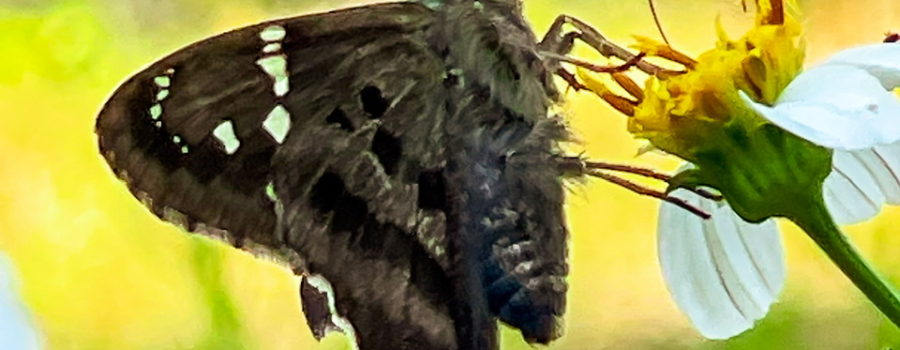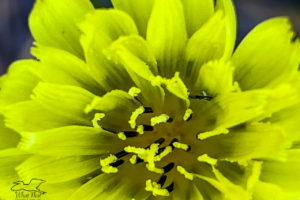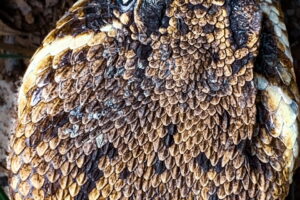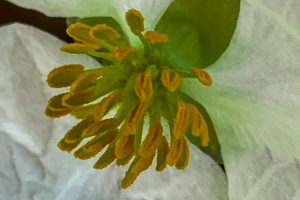The Long Tailed Skipper: Crop Pest or Beautiful Pollinator?

For the last few weeks we have been seeing an increase in our butterfly population. It’s been a lot smaller than last year, and I put that down to the drought that we had last spring. I suspect that the dry conditions and the lack of food items took it’s toll on the spring caterpillars. There are still fewer butterflies than I had last year, and there are several types that were everywhere last year that we only have a few of this year. Most notably, I’m seeing only a very few gulf fritillaries and very few zebra longwings. Both of these species really loved the passion fruit flowers and the drought did them in this year, so that may be part of it. On the other hand, since I’ve been seeing more butterflies I’ve seen quite a few of one I didn’t see last year at all. It is a long tailed skipper (Urbanus proteus), and it’s a very interesting and lovely little butterfly.

The long tailed skipper (and all members of the skipper family) are classified as butterflies because they are diurnal, but they tend to be small like most moths, and they have a different flight pattern from most other butterflies. The skippers have a darting and erratic flight pattern, and they usually move more quickly than other butterflies that tend to glide and move in a graceful manner. It’s this unusual flight pattern that has earned them the name “skipper”. At first glance, the long tailed skipper isn’t all that striking. When seen with wings folded or from underneath it has a dull, dark brown or grey set of wings with some darker spots on them. In fact, I almost didn’t take any photos of them the first time I saw them, not because I thought they weren’t pretty enough (that’s not really a factor to me when photographing wildlife), but because I thought it was a species I already had, the Horace’s duskywing. I decided to go ahead and get some shots because I realized that I might be able to improve in my previous shots. There’s always room for improvement in my book, so it’s hardly a waste of time to shoot things I already have. It wasn’t until I went back through them that I really noticed the long tail and realized it wasn’t a duskywing. The next time I saw them I worked a little harder at getting some good images of them, including following a couple around from flower to flower. That’s when I finally got to see one with wings open from above. Wow! From that angle this little butterfly was gorgeous! On the back of the wings and the back of the thick body this skipper is a fluorescent blue green. It really reminds me of the feathers on some types of tropical birds.

Long tailed skippers are native to Argentina north through South America and Central America and into the southern United States. During the summer they can be found as far north as southern New England. About this time of year they migrate out of the northern part of their range back south to warmer temperatures. Here in north central Florida we have them around most of the year, but even in this area they head further south for the coldest months. These beautiful adult butterflies are nectar feeders, and are also good pollinators since they are not overly fussy about what type of nectar they will eat. The caterpillars, on the other hand, have a very strong preference for legumes, and especially legume vines including cultivated beans and soybeans, Wisteria, beggarticks, and kudzu. Most times there are not enough of these caterpillars to cause serious damage to crops, but every once in awhile, they can overgrown and become very problematic. These caterpillars are frequently called “bean leaf rollers” because of their habit of making a small nest for themselves by rolling the leaves into a tube that they hold together with silk. While inside the leaf roll they make themselves comfortable while munching away on the leaf. You can imagine that a few of these caterpillars would be inconsequential, but many of them could be devastating to a crop.

In my book, the small amount of leaf damage done by these caterpillars is worth it to end up with the beautiful pollinator that is the adult. If I were a bean or soybean farmer I might very well feel differently, but as a back yard gardener I love my butterflies. If you do find these caterpillars in your garden and they are causing significant damage, consider planting a second small garden with beggarticks or Wisteria or even peas and beans that you can move these caterpillars to when you find them. That way you can protect your garden crops and still enjoy your butterflies later in the summer. Are you familiar with these butterflies? Have you had issues with them in your garden?

If you love beautiful nature photography and artwork accompanied by interesting and entertaining content, then give our blog a try. Just sign up below! It’s easy!





Recent Comments